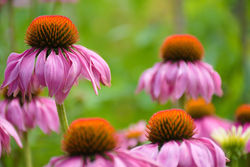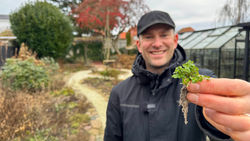Biennials to sow in July for flowers next spring
- Lars Wildes
- Jul 24, 2024
- 3 min read
Today, we're diving into the world of biennials and exploring why July is the perfect time to sow their seeds for a vibrant and colorful garden next year.
What are biennials? Biennials are unique plants that complete their life cycle over two years, producing beautiful blooms in their second year.
By sowing their seeds in July, you give them ample time to establish strong roots and prepare for a spectacular floral display the following year. In this post and in the step-by-step video below, we'll discuss some of our favorite biennials and short-lived perennials, share tips on how to collect and sow their seeds, and explain the advantages of sowing them in July.
Why sow biennials in July?
July is an ideal month for sowing biennial seeds for several reasons:
Optimal Growing Conditions: The warm soil temperatures and long daylight hours in July provide excellent conditions for seed germination and initial growth. This gives young plants a head start, allowing them to develop strong roots before winter sets in.
Extended Growing Season: Sowing seeds in July allows biennials to establish themselves before the onset of cold weather. By the time spring arrives, they are well-prepared to focus their energy on producing stunning flowers.
Natural Growth Cycle: Biennials naturally follow a two-year growth cycle. By sowing in July, you align with their natural rhythm, ensuring they have the time they need to mature and bloom to their fullest potential.
How to collect and sow biennial seeds
Collecting and sowing biennial seeds is a straightforward process. Here’s a quick guide:
Seed Collection: Wait until the flowers have finished blooming and the seed pods have matured. Carefully collect the seeds, ensuring they are dry and free from any moisture.
Prepare the Soil: Choose a well-drained location in your garden or, like we do, sow them in trays first. If you use trays, use normal potting soil. If outside, prepare the soil by loosening it and removing any weeds or debris. Adding compost can improve soil fertility and structure.
Sow the Seeds: Scatter the seeds thinly on the soil surface or sow them in rows. Lightly cover the seeds with a thin layer of soil or compost, just enough to protect them from being blown away.
Watering: Water the sown area gently but thoroughly. Keep the soil consistently moist during the germination period, which can take a few weeks.
Our Favorite Biennials and Short-Lived Perennials to sow in July
Here are some of our top picks for biennials and short-lived perennials that you should consider sowing in July for a delightful garden next year:
Digitalis (Foxgloves): Foxgloves are iconic cottage garden plants known for their tall spikes of tubular flowers. They thrive in partial shade and add a touch of elegance to any garden.
Dianthus barbatus (Sweet Williams): Sweet Williams produce clusters of fragrant, colorful flowers that attract pollinators. They are perfect for borders and flower beds.
Myosotis (Forget-me-nots): These charming little plants produce masses of tiny blue flowers. They are excellent for ground cover and add a splash of color to the garden.
Alcea (Hollyhocks): Hollyhocks are tall, stately plants that produce large, showy flowers. They are ideal for the back of the border and create a stunning vertical accent.
Hesperis matronalis (Dame's Rocket): Known for its sweetly scented flowers, Dame's Rocket is a delightful addition to any garden. It thrives in full sun to partial shade.
Verbascum (Mullein): Mullein plants produce tall spikes of yellow or white flowers. They are drought-tolerant and add a unique texture to garden beds.
Erysimum (Wallflower): Wallflowers are hardy plants that bloom in a variety of colors. They are perfect for adding early spring color to the garden.
Aquilegia (Columbine): Columbines have delicate, spurred flowers in various shades. They prefer partial shade and attract hummingbirds and bees.
By incorporating these biennials and short-lived perennials into your garden, you can enjoy a vibrant and diverse display of flowers next year. Remember, the key to success is starting in July, giving your plants the best possible start for a stunning floral show.






Comments